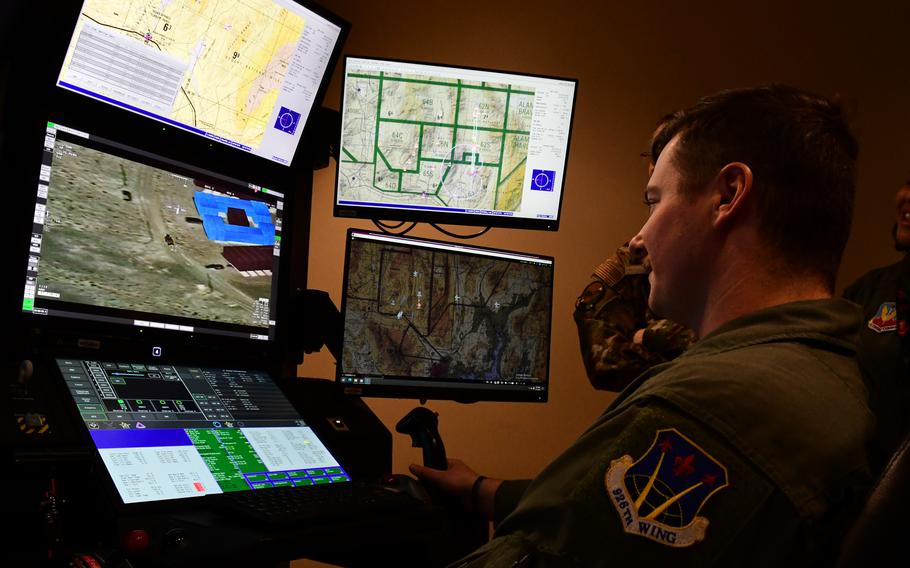
Members of the 926th Wing try the MQ-9 Reaper flight simulator at Creech Air Force Base, Nev., in February 2025. (U.S. Air Force photo)
WASHINGTON — Remote pilots and crews operating drones in warfare would become eligible for combat-related services through the Department of Veterans Affairs under a measure in the Senate version of the 2026 National Defense Authorization Act.
The legislation will provide crews of remotely piloted aircraft documentation to prove they have conducted combat operations, so mental health care and other services are prioritized for them after military service, according to lawmakers.
The 2026 NDAA, an annual must-pass bill authorizing priorities and programs for the Defense Department, was adopted Wednesday by the Senate Armed Services Committee on a vote of 26-1. The bill sets spending at $878.7 billion for the Defense Department for fiscal 2026, which begins Oct. 1.
The NDAA emphasizes technology in fiscal 2026 with investments in unmanned technology, artificial intelligence and hypersonic weapons, lawmakers said.
The legislation for drone pilots establishes what is known as a “combat identifier,” formal recognition of the crew members who remotely operate unmanned aircraft in combat missions, according to Sens. Jacky Rosen, D-Nev., and Kevin Cramer, R-N.D., both members of the Senate Armed Services Committee.
The bill directs the Defense Department to establish the official identification for drone pilots engaging in combat operations.
“Without this important distinction, remotely piloted aircraft crew members who are transitioning to other military careers or leaving the service may face barriers to timely, high-quality mental health care services,” according to a statement from the lawmakers.
Rosen and Cramer had earlier introduced the Combat Action Recognition and Evaluation for Remotely Piloted Aircraft Crews Act. The bill was added to the Senate version of the NDAA.
Rosen said the combat identification will “improve the recognition [remote operators] have earned and ensure their future care.”
While many veterans benefits are available to those who have served in the military, eligibility is often tied to specific service requirements and discharge conditions, according to the VA.
Creech Air Force Base in Nevada is a hub for remotely piloted aircraft that include the MQ-9 Reaper, a medium-altitude, long-endurance remotely piloted aircraft.
“Remotely piloted aircraft crew like those at Creech Air Force Base in Nevada perform combat operations but have no status identifier in their records for having done so, making it challenging to receive the support and care they deserve once they transition,” Rosen said.
While drones can be programmed to fly without direct human control, many are remotely piloted with an operator controlling the aircraft from a remote location.
“Remotely piloted aircraft crews often play an integral role in achieving high-stakes, mission-critical objectives,” Cramer said.
In North Dakota, the 119th Air Wing of the North Dakota Air National Guard operates MQ-9 Reapers. The 319th Reconnaissance Wing fly the RQ-4 Global Hawk, high-altitude remotely piloted aircraft.